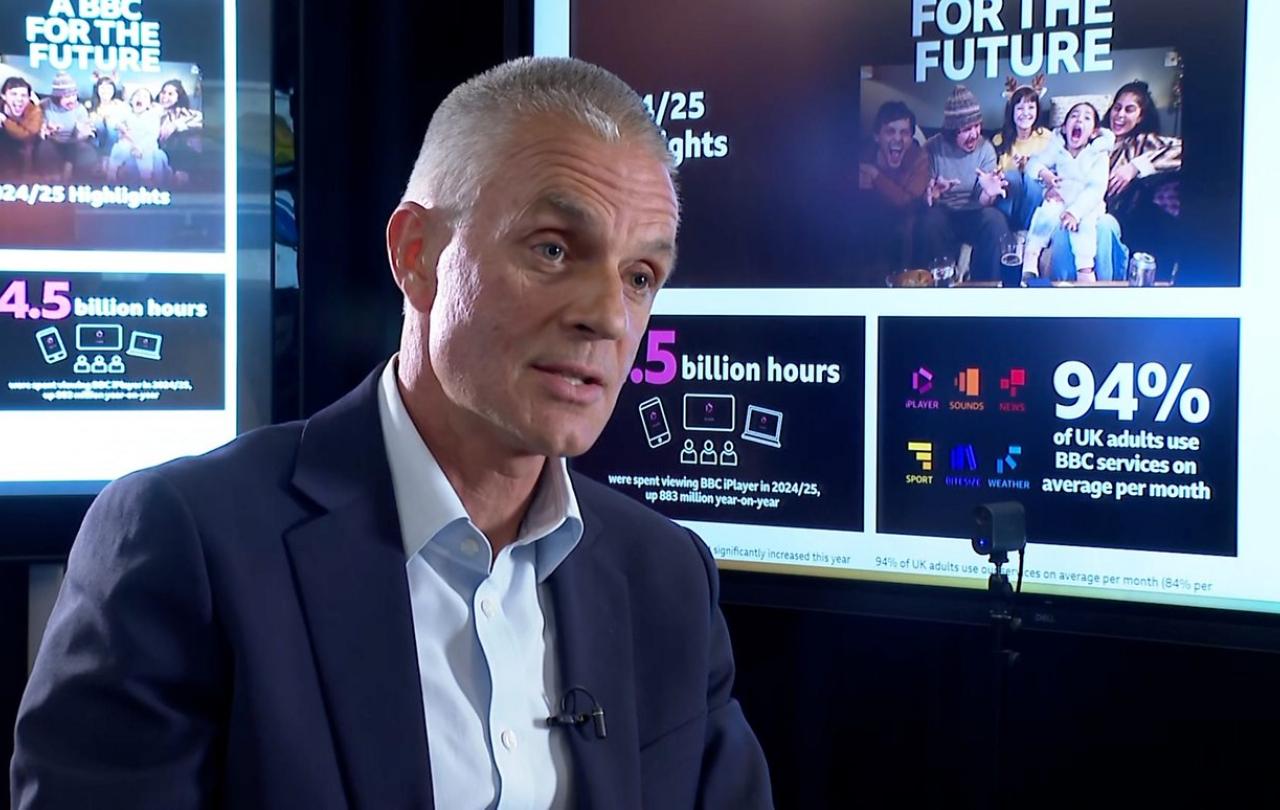Sometimes it seems like the BBC is never out of its own headlines. Just as one crisis is finally overcome, another erupts. This year alone we’ve seen outcry over a documentary on Gaza and the Glastonbury fiasco. Now, the broadcaster’s director general Tim Davie and head of news Deborah Turness have resigned over the latest scandal. A leaked internal dossier concluded a Panorama documentary on Donald Trump had misleadingly edited a speech he made on 6 January (it also raised questions over the BBC’s LGBT coverage and its Arabic language service).
Both Davie and Turness have insisted that the corporation is not biased in its coverage, even if mistakes had been made by its journalists and editors. But both found the pressure too much to bear. Speaking outside the BBC’s London HQ, Turness said:
“I stepped down over the weekend because the buck stops with me. But I'd like to make one thing very clear, BBC News is not institutionally biased. That's why it's the world's most trusted news provider."
She was right to identify trust as key. Can we trust the BBC to tell us what is going on in the world fairly and accurately, if it makes mistakes like these? Can we trust the individuals within the broadcaster to report the news impartially, regardless of their personal views? Indeed, can we trust those currently condemning the BBC to be acting in good faith, and not motivated by political hostility or commercial rivalry?
According to research by the Reuters Institute for the Study of Journalism, the BBC is the most trusted news brand in Britain, with 60 per cent of people saying they have faith in its output. Some of its newspaper antagonists can muster barely a third of that trust score. An Ofcom survey from 2019 found an impressive 83 per cent of viewers of the BBC’s TV news output trusted it to be accurate.
But trust in the media overall is slipping away in Britain. A decade ago, 51 per cent of people told the Reuters Institute they trusted the news in general; a Brexit referendum, Covid pandemic and ten years of political turmoil later, that figure is just 35 per cent.
Trust in the BBC is one of its most precious commodities, part of what helps it stand out both in Britain and globally. This is why Davie and Turness decided to fall on their swords, despite nobody suggesting they had personally done much wrong. It has to preserve the trust of its audience at all costs and the price to pay has historically been that when someone messes up, the people at the top resign. We saw the same back in 2012 when the then director general George Entwhistle quit after just 54 days in the role after the BBC got sucked into the Jimmy Savile abuse scandal. In 2004, both the director general and chair of the BBC’s board had to resign in the wake of the suicide of Iraq War whistleblower David Kelly.
This – the regular spectacle of the ‘honourable’ resignation – is an increasing rarity in other parts of public life. In our post-truth post-shame political environment, it is more common for politicians to brazen out scandal and disgrace, and rarer for their party institutions to insist leaders fall on their swords. We lost count of how many scandals Boris Johnson survived as prime minister before he was finally felled by Partygate in 2022. Across the pond, Donald Trump has effectively rendered himself uncancellable by capturing the Republican Party and much of the US media ecosystem, despite corruption and growing authoritarianism. As the Guardian columnist Marina Hyde put it, “The BBC is the last place anyone still resigns from.”
And yet. There is an interesting counter-example from another storied British public institution battling to maintain relevance in the 21st century and wracked by scandal and division: the Church of England. Just a year ago it too suffered the ignominy of seeing its leader resign in disgrace. Justin Welby was forced to quit as Archbishop of Canterbury after he was criticised in an official review over John Smyth, one of the most prolific abusers in the church’s history.
Welby painted his resignation in similar terms: an honourable act of falling on his sword to take responsibility for the institution’s broader failings. In his cloth-eared valedictory speech in the House of Lords, the outgoing Archbishop told his fellow peers that “there comes a time, if you are technically leading a particular institution, when the shame of what has gone wrong, whether one is personally responsible or not, must require a head to roll.” And in this particular case, there was only “one head that rolls well enough”, Welby added; his own.
But did this supposedly principled act of resignation rebuild trust? Not really. In fact, it may have done the opposite and further damaged the public’s trust in its national church. Welby initially hesitated and refused to resign after the damning Smyth report was first published, only agreeing to go after a weekend of simmering outrage. The vibe was less 'honourable man falling on his sword' and more 'leader convinced they’d done little wrong reluctantly forced out against their will'.
And yet with the passing of time, his resignation has become mired in regret. Growing numbers of both bishops and others in the church have questioned just how liable he really was for the failure to stop Smyth’s abuse, and how robust the Makin report’s conclusions are. There is an increasing sense Welby was forced out in a rush to find a scapegoat, any scapegoat, to stem the bleeding and show that the church was taking it seriously.
His successful defenestration has radicalised the more hardline elements of the abuse survivor movement, encouraging them to try to topple their other despised enemies within the church hierarchy. Bishops now fear they will be next on the chopping block, regardless of their culpability; unsurprisingly this does not engender greater trust. In fact, many observers would suggest trust between the bishops and those in the pulpits and pews has never been lower in modern times. The tortured attempt to introduce blessings for gay couples has poisoned the well further, contributing to the system for appointing new bishops to begin to break down. Somehow, both the liberal and the conservative wings of the Church feel equally betrayed by the bishops’ actions during the gay blessings saga.
Trust is slowly earned, and quick to drain away. Even doing the honourable thing and resigning is no longer a surefire route to restore trust in our public institutions. Just as with Welby, it is likely these BBC resignations will not rebuild confidence in our national broadcaster. Instead, they may well further encourage the right-wing press and demagogues like Trump to scream “fake news” and hector impartial news outlets further. The resignations also tell the ordinary viewer and listener the accusations of bias must be true – otherwise why would these bigwigs have to stand down?
There are no easy lessons to read across from the Church of England’s battle to regain trust to the BBC. For years now bishops have been urging clergy and lay people to try to trust them once more, to put aside defensiveness and hostility and work together in vulnerable collaboration. And things have mostly only got worse. Trust cannot be willed back into existence, nor will it return through the bloodletting of high-profile ‘honourable’ resignations.
In fact, there’s a deeper problem which goes much further than the BBC or the Church of England. A deeper crisis of trust in society at large. For 25 years the Edelman Trust Barometer has been measuring societies around the world, and of 28 nations polled last year the UK’s average trust score was rock bottom: just 39 per cent of people on average said they trusted businesses, the government, or the media. In fact, almost everywhere people are running low on trust. Fears that government leaders and media elites purposely lie to us are at an all-time high. Until we can find ways to rebuild the ties that bind us, as individuals and communities, it is hard to see how the large institutions that used to shape British civic life – whether that is the BBC, the Church or parliament – can regain the public’s trust, resignations or no resignations.






